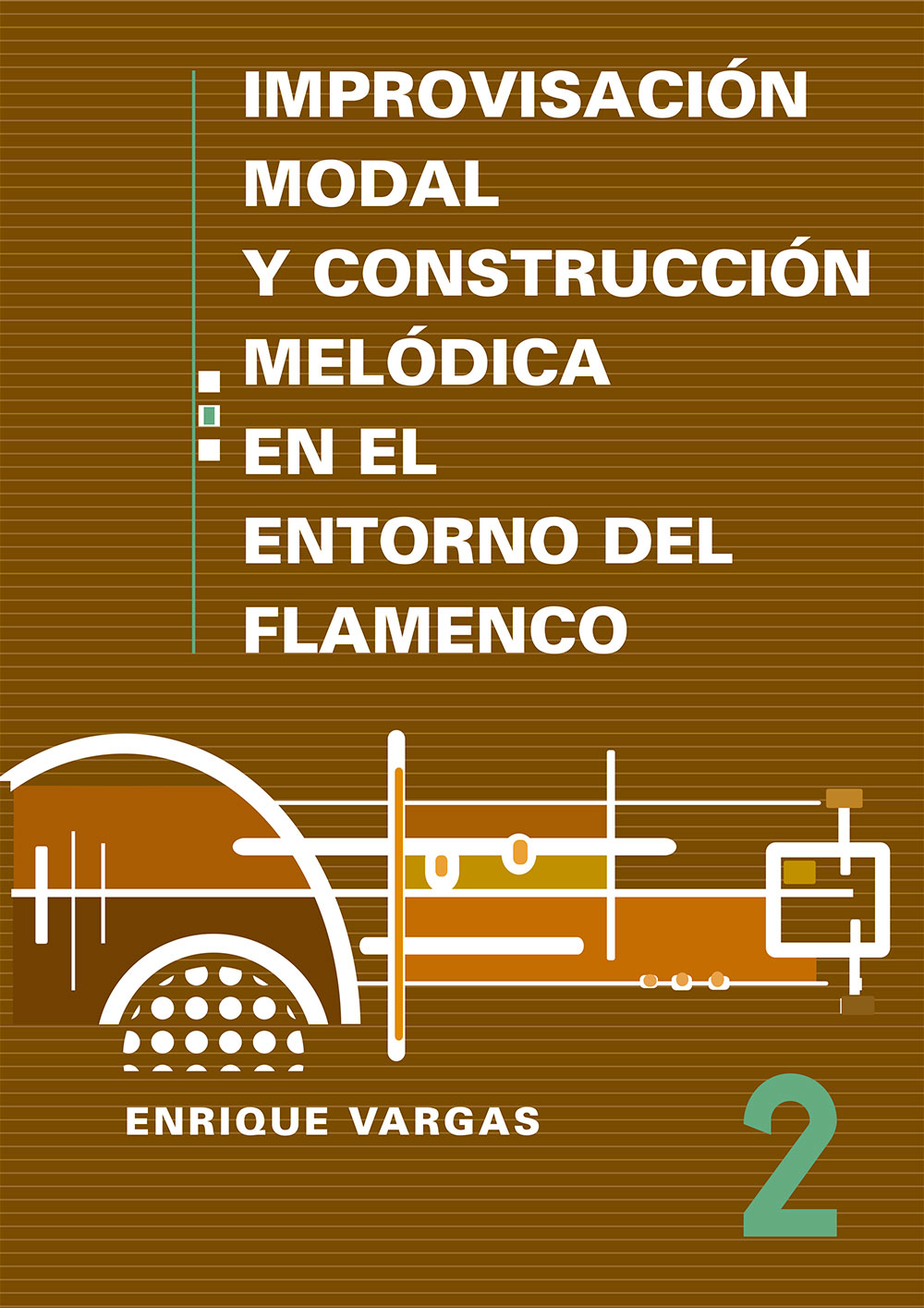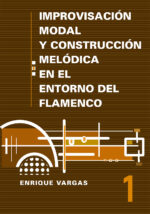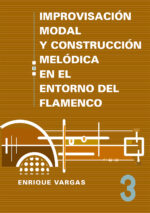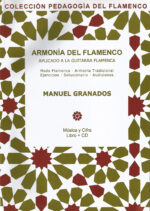Description
This book deals with the body of main flamenco modes extracted from the Arabic modal system Maqam. First, the concept of tetrachordal modal construction (ajna in Arabic) is introduced. The ten main flamenco modes are explained, and the concept of advanced, horizontal left-hand fingerings for guitar is introduced.
Since modern flamenco harmony is heavily influenced by jazz, the concept of harmonic sub- stitutions is introduced. Different types of harmonic substitutions – direct, indirect, tritone, backdoor, etc, are analyzed and four types of II V I and IV V I cadences are explained. The harmonic aspects of the flamenco modes are analyzed. The use of add chords in flamenco tonalities is presented and various examples of traditional flamenco forms are harmonized, with a detailed explanation of the harmonic substitutions being applied.
The concept of the Andalusian Cadence and Hijaz tonality are introduced. Each flamenco mode is harmonized tetrachordally and analyzed, and numerous examples of flamenco modes/harmonies are given.
Appendix I This appendix contains 55 licks in the main flamenco modes. These licks are harmonized and each comes with a complete guitar fingerings. Still, when the guitar fingering symbols are disregarded, they are perfectly valid for any melodic instrument.
Appendix II This appendix is a complete thesaurus of the flamenco modes in all of their vertical and horizontal guitar fingerings, and are written in every flamenco tonality.
Ever since flamenco caught the attention of Western composers and musicologists, its modal and harmonic landscape has caused quite a bit of confusion. Every attempt to explain flamenco’s complex modalities and the harmony they generate has been unconvincing and incomplete. The main reason it has not been coherently analyzed is due to the fact that it has always been attempted from the standpoint of Western music theory, which is primarily based on cadential relationships.
Flamenco, however, is based on a combination of an Eastern modal system, which is known in Arabic as Maqam (there is a variety of different names in other Eastern countries), and Western harmony, which has been applied to the Oriental modalities throughout the course of history in the melting pot of cultures and civilizations that is Andalusia. Without understanding the intricacies of Maqam and the harmony its complex tetrachordal combinations generate, it would be impossible to understand, let alone create a theoretically structured analysis of this musical genre.
This is the main reason these books were written; a complete and well-structured body of flamenco modal theory has been long overdue, and these three volumes are a humble attempt to achieve this objective.
Every scale, arpeggio, and melodic pattern comes with a corresponding guitar fingering, having in mind that the guitar is the primary instrument of flamenco, however, the material can be applied to any instrument. Most importantly, this series has been conceived as a theoretical and practical manual for composers, improvisers, performers, arrangers, and musicologists interested in modal music in general, and/or flamenco modalities in particular.
PURCHASE and DELIVERY of the product in physical format at storemusic-live.com







Reviews
There are no reviews yet.